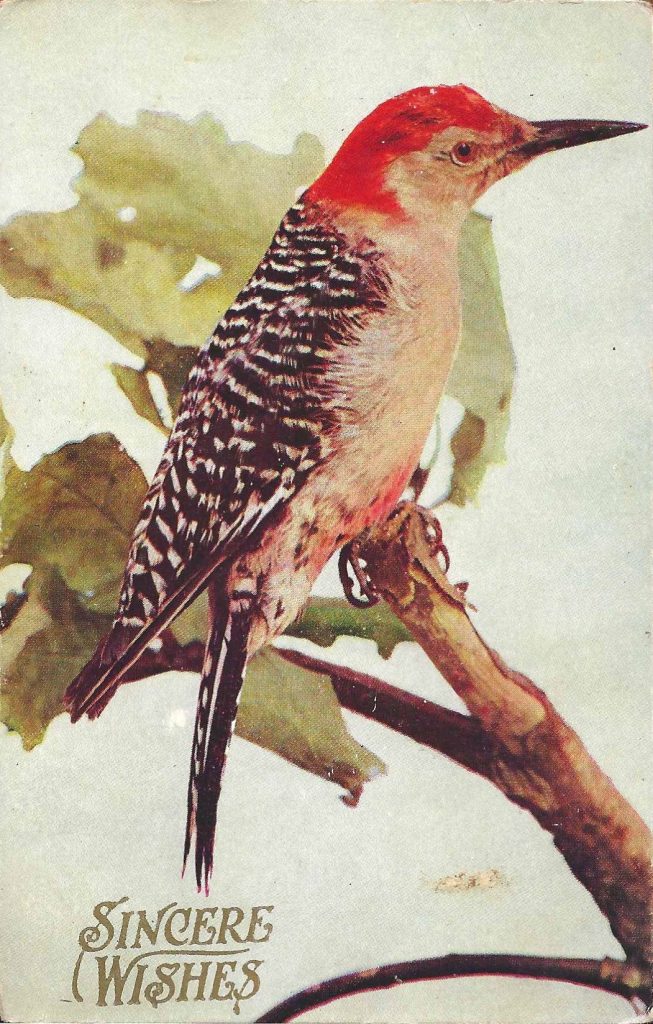
The woodpecker pecked out a little round hole
And made him a house in the telephone pole.
One day when I watched he poked out his head,
And he had on a hood and a collar of red.
When the streams of rain pour out of the sky,
And the sparkles of lightning go flashing by,
And the big, big wheels of thunder roll,
He can snuggle back in the telephone pole.
Elizabeth Madox Roberts
Elizabeth Roberts writes poems about birds and bugs, childhood diseases, days on the calendar, times of the day, the weather, relationships, and the many unseen things of daily life.
Walter the woodpecker, as you see on the postcard above brings you Sincere Wishes. It matters not one iota what you wish for, Walter wants your wish to be sincere! The card was mailed at Doehill, Virginia, on October 30, 1909, by Roy Simmons. [Poor Roy; from his spelling, capitalization, and punctuation we know that he did not pay much attention when these skills were taught wherever it was that he attended grammar school. Nevertheless, we can glean from his message that he is “geting (sic) along just fine.”]
Walter is not the usual woodpecker – there is hardly such a thing as usual in the world of woodpeckers. Woodpeckers are members of the PICIDAE family of birds. Within the family there are 37 genera (a genus is a subdivision of the family) and within each genera there are the species that is still another sub-grouping. In total (as of 2017) 247 species of woodpeckers have been identified. No one knows for sure if this number is accurate since several are listed on endangered species lists.
Members of the Picidae family are found around the world except in Australia and the far reaches of the polar caps. Most live in densely forested woodlands and in a few rare cases they find habitats in desert areas.
The woodpecker is known primarily for its behavior. It has no memorable song or chirp. It eats what it finds under the bark of trees. A few species will vary their diet and include fruits, other bird eggs, tiny animals, discarded food (trash), and tree sap.
Without exception, the one thing woodpeckers do not do, is build nests. Their roosting spaces are holes that they create in tree trunks, fence posts, the eaves of buildings, and telephone poles.
Generally speaking, woodpeckers are tiny birds. Some are as small as three inches in length and weigh about three to five ounces – about the same weight as three pencils. The largest of the woodpeckers are about 20 inches and weigh approximately 15 ounces.
The woodpecker’s behavior is what captivates most birdwatchers. They have the strongest bills/beaks of any bird, and they use it for drilling or drumming on trees. It is kept sharp – in some cases, razor sharp – by constant use. Their long, sticky tongues help in extracting the food for which they search.
Sadly, woodpeckers are lonely birds and live solitarily. Their behavior is often aggressive, even toward their own kind. Woodpeckers are known to defend a feeding source, such as an ant colony or fruit-tree, by driving intruders away with its pecking pattern until the source is completely exhausted and the woodpecker is, itself, forced to abandon it.
Aside from their behavior, the size of the woodpecker’s nesting holes are unimaginably small. The novice birdwatcher couldn’t help but wonder how a bird could get through one. Also, the coloration of most woodpeckers is equally amusing to birdwatchers. The vast majority are tri-colored birds of red, white, and black.
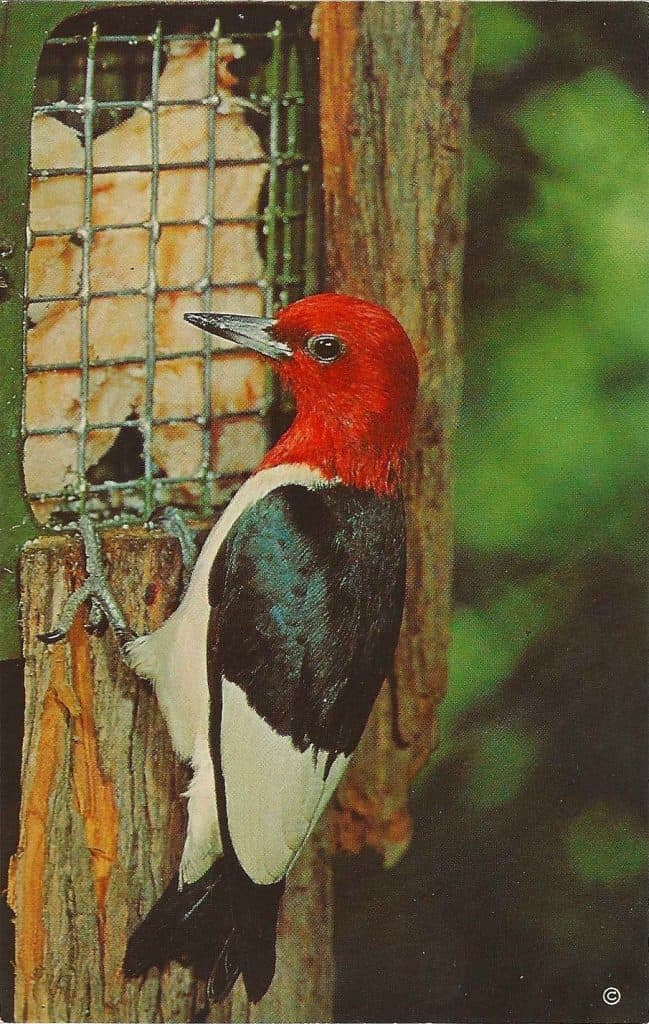
Certainly the most recognized of the woodpeckers, the Red-Headed
Woodpecker is the most conspicuous of the species, and he will devour
colonies of nearly any insect.
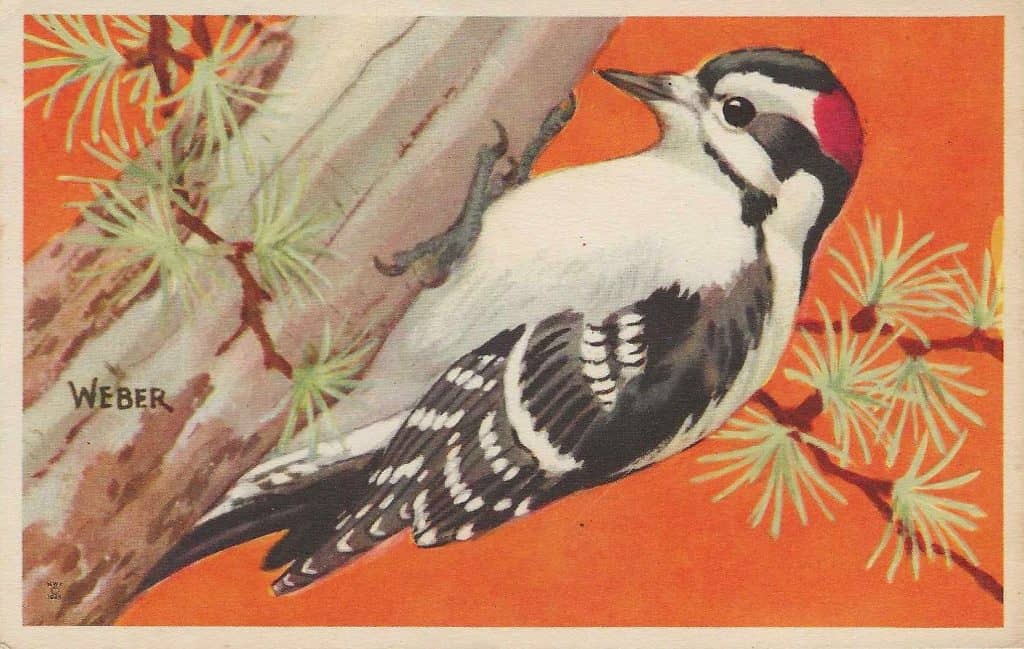
The Downy Woodpecker
A most welcome little bird, averaging six inches, who
feeds on orchard borers.
Left: the Ivory-billed Woodpecker may be one of the rarest, if it still exists. In the last sighting, circa 2016 there were less than a hundred remaining in the swamps of Louisiana, primarily in the Mississippi River delta. Right: named for its hairy crest, the Pileated Woodpecker is commonly found in densely wooded areas where lumbering is threatening their habitats. The Pileated Woodpecker is one of the largest, with a wingspan of nearly 30 inches.
* *
Woodpecker postcards are not rare nor expensive. Children love them and it may be a great starter topic for your grandchildren, if you want them to join you in collecting cards.
So how did Walter (the woodpecker pictured on the card at the top of the article) get his name? He is the namesake of Walter Lantz, the creator of a bird named, Woody!
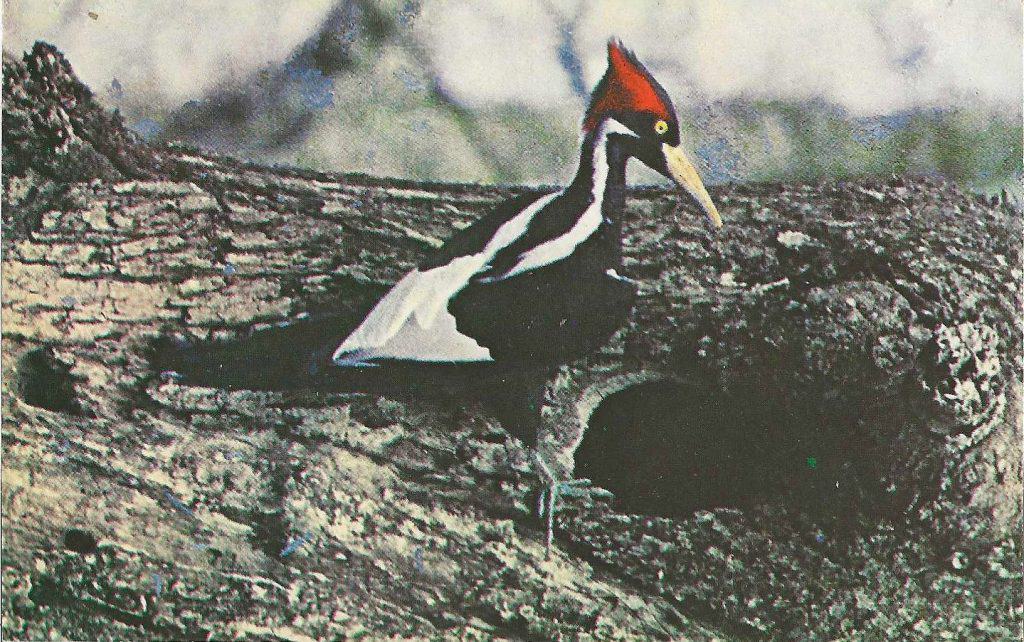
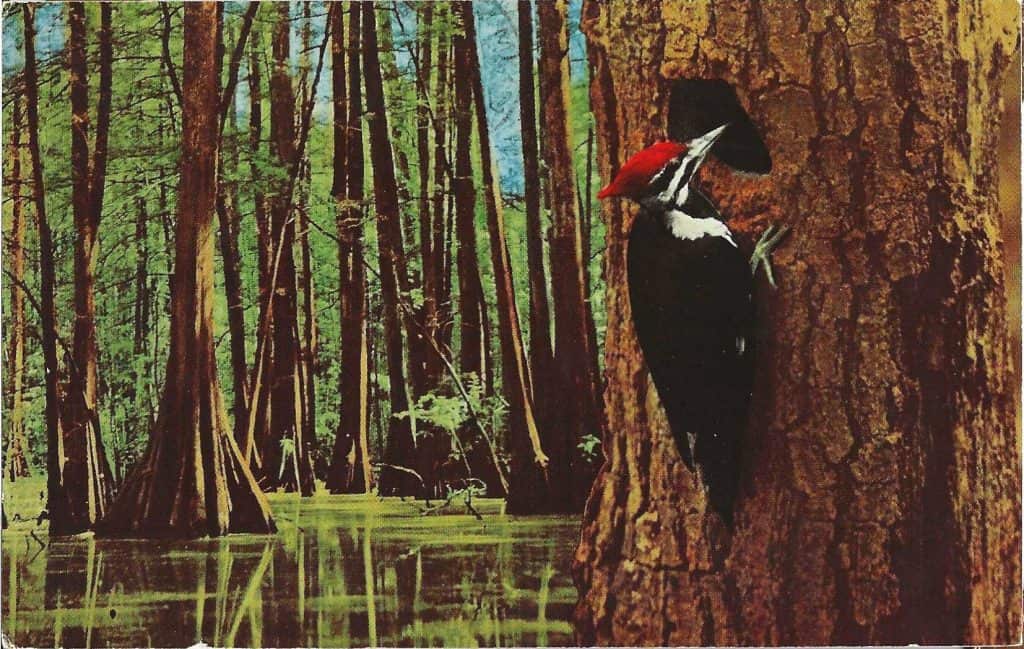
Thank you for the article. It is interesting and educational. Your point about making woodpeckers a starter collection for young ones is the kind of advice that can really help the future of the hobby.
Absolutely! Isn’t that how a lot of us started? Besides for giving the generations an activity they can do together, a single topic collection plays right into kids love of repetition.
Woody Woodpecker has a girlfriend named Winnie as well as a niece named Splinter and a nephew named Knothead, I don’t know if the parentage of the “kids” was ever established.